An American photographer in Paris and London, Curtis Moffat joined the cities' avant-garde circles, capturing the 'bright young things' of the roaring twenties in stunning photographic portraits.
Curtis Moffat was born in 1887 into a wealthy New York family. He was raised in Brittany and attended boarding school in the United States. After a brief diplomatic career, he studied painting in New York and at the Ecole des Beaux Arts in Paris from 1913 to 1914. He married the English actress and poet Iris Tree, daughter of the actor Sir Herbert Beerbohm Tree, in New York in 1916.
Avant-garde Paris
After the First World War, Moffat returned to Paris, where he joined bohemian cultural circles, spending time with leading avant-garde artists and writers, including Ezra Pound (1885 – 1972), Man Ray (1890 – 1976), Kiki de Montparnasse (1901 – 53), Mina Loy (1882 – 1966) and Jean Cocteau (1889 – 1963). In 1923 he began experimenting seriously with photography and made portraits in collaboration with the American Surrealist artist Man Ray. Together they also made abstract photograms – camera-less images made by placing an object directly on to photographic paper and exposing it to light. Man Ray dubbed these images 'Rayographs'.
Moffat titled his photograms 'Abstract Compositions', exhibiting four of them in his first photography exhibition at the Bond Street Galleries, London, in 1925. They are notably among the most distinctive examples of camera-less photography from the period.
Society portraits
Moffat moved to London in the mid-1920s, and in 1925 opened a portrait studio with British society photographer Olivia Wyndham (1897 – 1967). Here, throughout the 1920s and early 1930s, he produced stylish photographic portraits of leading society and arts figures, known colloquially as the 'bright young things'.
Among Moffat's famous sitters were the literary brothers Osbert and Sacheverell Sitwell (1892 – 1969 and 1897 – 1988), who he posed as a duo, seated back-to-back and side-by-side; the actress, writer and socialite Diana Cooper (1892 – 1986), who sometimes posed dressed as her stage and screen characters; and the notorious Tallulah Bankhead (1902 – 68), an American silent film star who once famously quipped, "I'm as pure as the driven slush".
Some of his most celebrated portraits were of Nancy Cunard (1896 – 1965), a prolific English writer, editor, publisher, political activist, anarchist and poet. She was associated with the Dada and Modernist movements in Paris during the early 1920s, when she and Moffat became friends and lovers. In one portrait she wears a coat designed by the avant-garde artist Sonia Delaunay (1885 – 1979), while in another series, Moffat photographed her in inventive poses wearing an extravagant feathered headdress.
Another frequent subject was fellow society photographer Cecil Beaton (1904 – 80). Beaton later cited Moffat as an early influence on his own photographic style, and remembered Moffat as:
A gentle, quiet, easy-going man with velvet eyes and enormous charm, Curtis Moffat was the most Europeanised of Americans. He seemed to be only 'at home' in the quietness of his book-filled rooms. But appearances are deceptive; in fact he was the centre of enormous creative activity.
Snapshots
When not taking glamorous society portraits, Moffat turned his camera to the people and things that surrounded him in everyday life. Snapshots of friends and family engaged in outdoor leisure and sporting pursuits seem to reflect the prevalent 'healthy body culture' of the late 1920s and early 1930s.
Some of his studies were more contrived arrangements of seemingly disparate objects – such as a sculpted head with a mallet or a pistol, jacket and flower.
Many of Moffat's studies also showed an eye for the quirky, witty and surreal: a woman hanging from a locomotive, or an outdoor table laid for a meal, with an apparently severed head as its centrepiece.


Nudes
Moffat also made numerous nude studies both in and out of the studio. These include a series of female models posed with African masks. Although he may have been inspired by Man Ray's celebrated photograph Noire et Blanche (1926), an interest in African sculpture was also the latest avant-garde trend of this period.
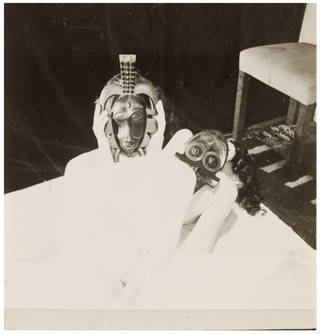
A likeness to the work of Man Ray and other Surrealist photographers can be seen in his fragmentation of the human form, such as in this semi-abstract view of a female nude.

While the nudes that Moffat made in his studio were dramatically lit and formally composed, he also photographed nudes outdoors, resulting in more spontaneous and playful photographs.
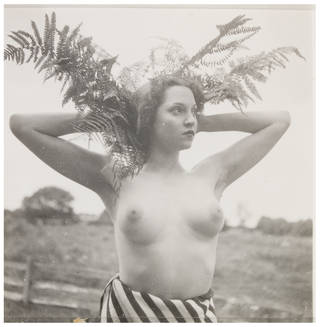
Curtis Moffat Ltd.
In 1929, Moffat opened an interior design company and gallery In London's Fitzroy Square. The company sold Modernist furniture by leading designers, alongside an eclectic range of African sculpture, Chinese vases and European antiques.
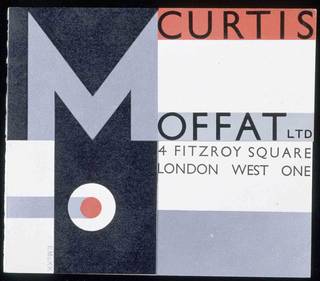
The premisies at number 4 Fitzroy Square had been designed by the famous Georgian architect Robert Adam in 1794. Moffat appointed the architect Frederick Etchells (1886 – 1973) to convert the interior to accomodate showrooms and a gallery. Etchells' conversion became arguably one of the best-known Modernist interiors in Britain, with its unique mix of avant-garde and traditional design. The company closed in 1933, largely due to the economic Depression. Magazine and newspaper clippings that Moffat collated during this period are now preserved at the Museum.
Advertising
Moffat had done some commercial photography work while running his design business, but it was after the closure of Curtis Moffat Ltd. that he turned towards it more seriously. He was commissioned by Shell-Mex (a conglomeration of oil giants Shell and British Petroleum) to make colour photographs for their 'Photographers Prefer Shell' posters. He also did colour advertisments for companies including K Shoes, Gutermann's Sewing Silk, and Good Tea.

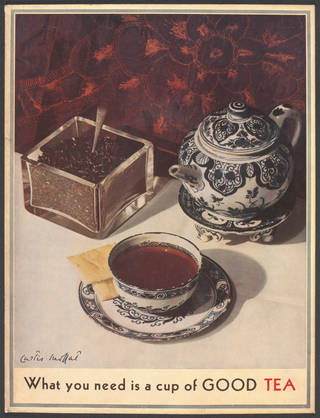
Colour Still Lifes
During the 1930s, Moffat applied his pioneering use of colour photography to artistic as well as commercial ends. A solo exhibition of his work in colour, primarily of carefully arranged still life subjects, was held at the Mayor Gallery, London in 1935. Some critics praised their delicacy, subtlety and range of colour and their likeness to Dutch still life paintings. Others, such as the art historian Anthony Blunt, found them 'painfully realistic'.
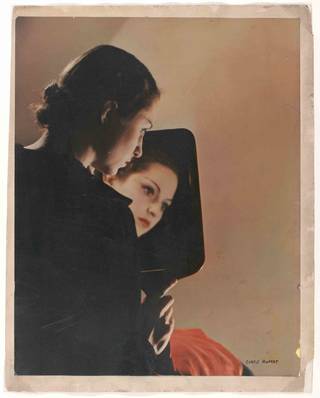
Moffat's skill in colour photography was recognised by photo-historian Beaumont Newhall, who included two works in his landmark exhibition Photography, 1839 – 1937, held at the Museum of Modern Art, New York, in 1937.
Moffat and his first wife, Iris Tree, divorced in 1932 and in 1936 he married Kathleen Allan, who had worked with him for some years in his studio. He returned to the US in 1939 and turned his attention again to painting, predominantly still lifes, at his house on Martha's Vineyard until his death in 1949.
Find out more about Curtis Moffat's working methods.

